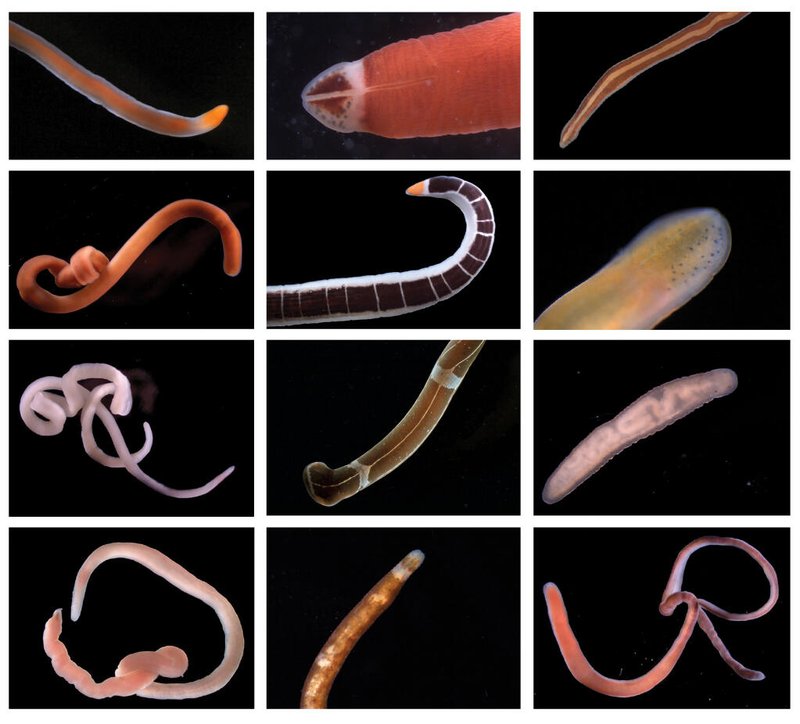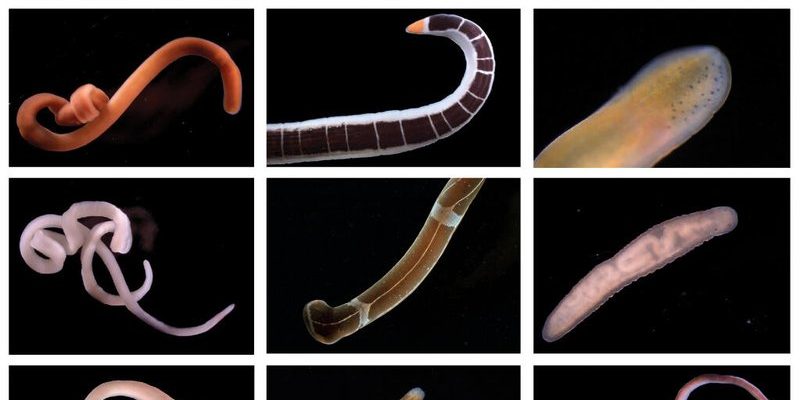
You might be wondering where exactly these intriguing worms are found. The truth is, they have quite an adventurous lifestyle, popping up in many coastal and deep-sea habitats across the globe. From sandy beaches to rocky shores, they thrive in environments that provide shelter and food. In this article, we’ll explore the diverse locations ribbon worms call home, their habitats, and why they matter to marine ecosystems.
What Are Ribbon Worms?
Before diving into where you can find ribbon worms, let’s briefly touch on what they actually are. Ribbon worms belong to the phylum Nemertea and are known for their elongated bodies, sometimes resembling long, thin noodles. They have a unique feature called a proboscis, which they can extend to capture prey like small fish and crustaceans. Imagine a snaky tongue that shoots out to snatch a meal!
These creatures come in various colors, including bright reds, greens, and browns, which can help them blend into their surroundings. They generally inhabit marine environments but are also found in some freshwater habitats. Their adaptability is truly astounding, allowing them to thrive in different settings.
Shallow Coastal Waters
One of the most common places to find ribbon worms is in shallow coastal waters. These areas are often rich in nutrients, making them ideal for many marine species, including ribbon worms. You can typically spot them in sandy or muddy substrates near the shore.
In these coastal habitats, ribbon worms can be found hiding under rocks and seaweed or burrowed into the sediment. They prefer spots that offer protection from predators while providing access to food. Think of it like finding a cozy café where you can relax and enjoy a good meal. The biodiversity in these shallow waters supports a variety of life forms, and ribbon worms play a crucial role in maintaining this ecosystem balance.
Rocky Intertidal Zones
Another prime location for ribbon worms is the rocky intertidal zone. This area is often exposed during low tide, revealing a fascinating world of marine life. Ribbon worms can be spotted clinging to rocks or hiding in crevices, where they can safely navigate their environment.
In rocky intertidal zones, ribbon worms often benefit from the constant movement of water, which brings fresh nutrients to their habitat. Their ability to adapt to fluctuating conditions—like changes in water level and temperature—makes them resilient. You might say they are the ultimate survivors of the sea!
Estuaries and Brackish Waters
Estuaries are another hotspot for ribbon worms. These regions are where freshwater from rivers meets salty ocean water, creating a unique brackish environment. Ribbon worms thrive in these areas due to the rich food supply and diverse habitats.
In estuaries, you can find ribbon worms burrowed in mud or hiding among grasses and mangroves. These habitats provide essential cover and feeding opportunities. Honestly, estuaries are like bustling marketplaces for marine life, with plenty of food and shelter for ribbon worms and their neighbors.
Marine Sediments
If you dig a little deeper—literally—you might uncover ribbon worms living within marine sediments on the ocean floor. These sediments are made up of tiny particles, like sand and silt, providing an excellent habitat for many marine organisms. Ribbon worms often inhabit these areas, burrowing into the sediment to stay safe and find food.
In these deeper environments, ribbon worms contribute to the cycling of nutrients, which keeps the ecosystem healthy. Just think about how valuable it is to have such a diverse range of species working together at the bottom of the sea, creating a rich environment for all.
Coral Reefs and Seagrass Beds
Despite their preference for muddy and sandy substrates, ribbon worms can also be found around coral reefs and seagrass beds. These areas provide a wealth of food and shelter, making them attractive spots for ribbon worms to inhabit.
Coral reefs are like underwater cities filled with vibrant life. Although ribbon worms might not be the most visible inhabitants, they play a significant role in the ecosystem. They help control populations of smaller marine creatures, maintaining balance within these complex habitats.
Seagrass beds also offer a cozy environment for ribbon worms. The seagrass provides shelter while the nutrient-rich waters support a variety of prey. These environments are essential for many marine species, and ribbon worms add to the diversity found within.
Deep Sea Habitats
Finally, some ribbon worm species venture into the deep sea, where they can be found in colder waters and more extreme conditions. Here, the environment is vastly different from the shallow coastal areas. The pressure is higher, and light is scarce, but ribbon worms have adapted to survive in this challenging environment.
Deep-sea ribbon worms often live in sediments that cover the ocean floor, feeding on detritus—decayed organic matter that settles to the bottom. It’s like a hidden treasure trove where these fascinating worms can thrive away from the hustle and bustle of shallower waters.
The Importance of Ribbon Worms in Marine Ecosystems
You might be wondering why it’s essential to know about where ribbon worms are found. Well, these creatures play a crucial part in the marine food web and contribute to nutrient cycling. By preying on smaller organisms, they help keep populations in check, ensuring a balanced ecosystem.
Additionally, ribbon worms are indicators of environmental health. Their presence or absence can reflect changes in habitat conditions, which can help scientists monitor the health of marine ecosystems. So, the next time you spot a ribbon worm, remember that it’s not just a cool creature but also a vital part of the underwater world.
In summary, ribbon worms are found in various marine environments, from shallow coastal waters to deep ocean habitats. Their adaptability and role in ecosystems make them a fascinating subject to explore. By understanding where they thrive, we can better appreciate their importance in maintaining healthy marine ecosystems.
When you think of ribbon worms, think of them as intricate threads weaving throughout the ocean, connecting different communities and contributing to the vibrancy of marine life.

